When you think of DCS, you probably think of intense combat and dogfighting. Maybe even ground attack missions under extreme weather conditions, or even a surprise attack at the dead of night. While all of these are core aspects of the simulator, there is also a tamer and quieter side of DCS, and that'd be flight training.
Developed by Eagle Dynamics themselves, the L-39 Albatros module focuses on said training side and maximizes it to bring players a complete package that not only serves as a great introduction to jet flight for new players, but also as a light attack platform that can bring fun to even the most veteran of players.
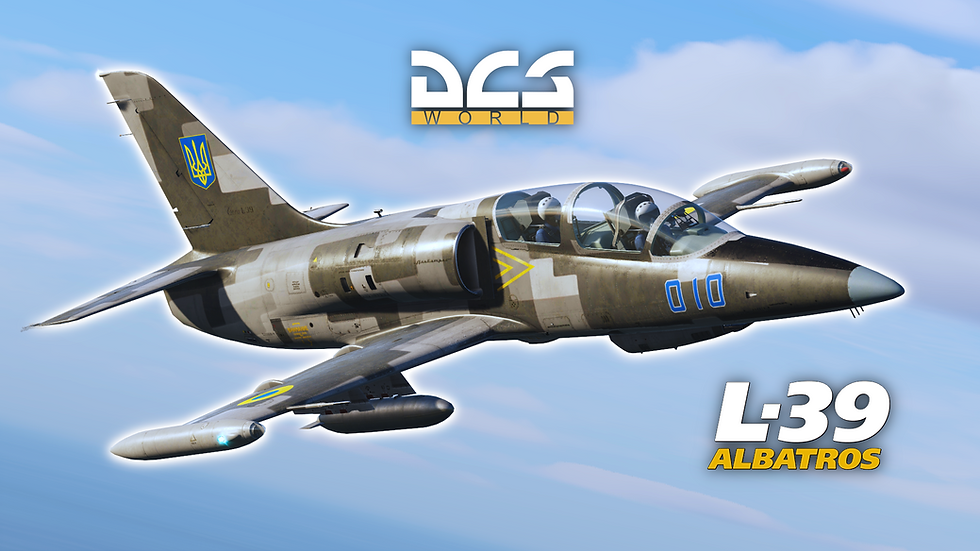
It has now been quite a few years since this aircraft entered the DCS arena in 2016, and in that time some of the modules that occupy the same space as the Albatros have evolved and grown, others have been added in the form of free mods, while a new official one has been added to the sim: IndiaFoxtEcho's MB-339A/PAN. Let's see how this module has matured and if it still is the most-buy trainer for DCS rookies and veterans alike. As per usual, I will be separating this review in several parts:
External and internal 3D models
Visual effects and sound design
Flight modeling
Mission capability
Armament
Ease of use and learning curve
Its place as a trainer/light attacker in DCS
Is this aircraft for you?
EXTERNAL AND INTERNAL 3D MODEL
The external model has certainly received some updates over the years, which is especially noticeable due to the addition of decent normalmaps. While it might look great at first, you can notice this module's age straight away by zooming in a bit and seeing that its texel density does not hold up to modern modules. This model uses a single texture sheet, when others rely on two or more to increase the perceived texel density, which has become a standard for DCS World modules. Another factor that also dates this module is the use of specular maps instead of the modern roughmets for reflections, which means that the Albatros is not using the PBR (Physical Based Rendering) tech that is DCS' standard.
Just like with our MiG-19P review, this module seems to fall a bit short in terms of quality when compared to modern modules; but that doesn't mean it looks bad in any way. The only actions needed here would be to make the model shaders PBR-capable and make those PBR textures with a bigger resolution.
The same criticisms can be said about both front and rear cockpits, especially with the muted colors and flat reflections. The model itself is excellent, but it is thanks to the aged texture work that this model doesn't look as good as it could.
With an upgrade similar to the one done for both the Ka-50 and A-10C modules, this module could be one of the most accurate and impressive-looking modules in the game, but until that date arrives this cockpit will remain a bit dated and in a bit of a sorry state. Does it look bad? No, absolutely not. Could it look stunning with a remaster? Yes, certainly! I would certainly pay for an upgraded version of this module if it meant an improved cockpit.
VISUAL AND SOUND EFFECTS
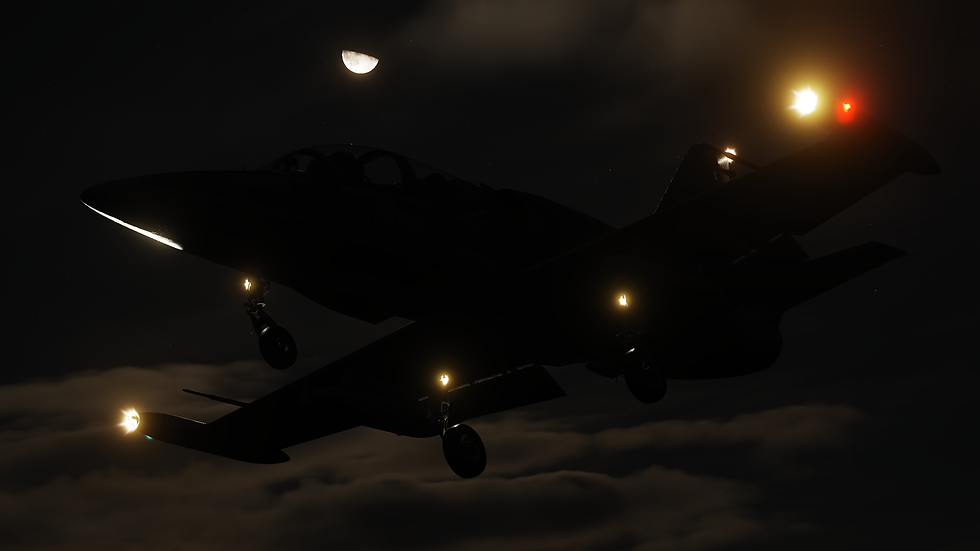
Aside from the light cones coming out of the wingtip lights, this module has little to none when it comes down to special effects. No special overwing vapor, no unique engine smoke, nothing. To be honest, I was expecting this, and I am not even disappointed. This is a straight wing trainer with a non-afterburning engine, so the amount of effects that could be realistically made for it is very small.
Sound-wise, the Albatros likes a bit of feedback from its engine, but its unique engine notes balance out this flaw. It is when it comes down to using the brakes that the typical whooshing of the pneumatics is not prominent and lacks force, making me question if my brakes are even working sometimes. The same applies for one crucial aspect o weapon operations with the ZA version: The pyro charges.
This charges, which are used for the cocking of the internal and external guns, seem to not emit any sound whatsoever. In other aircraft with pyro charges, such as the MiG-21Bis, it is clear when a charge goes off as it sounds like a small localized explosion. This sound would be an excellent addition to the module, adding to an already decent experience.
FLIGHT MODELING
DISCLAIMER: This is always a tough category, as like with any other aircraft, there is a lot to take into consideration other than just the feel of the flight model. This category is the most subjective one in this article, as I do not have any real world experience with this craft. I will only base my opinion on practical experience and knowledge of practical aerodynamics and the theoretical behavior that an L-39 should have under certain scenarios.
With the disclaimer out of the way, it is clear that this flight model was made with a lot of care and attention to detail. The way this aircraft stalls and the speeds at which it does are accurate enough to the real one that I have found it to be a believable experience. As I have already stated, I have never flown an Albatros, but this experience has been excellent so far.
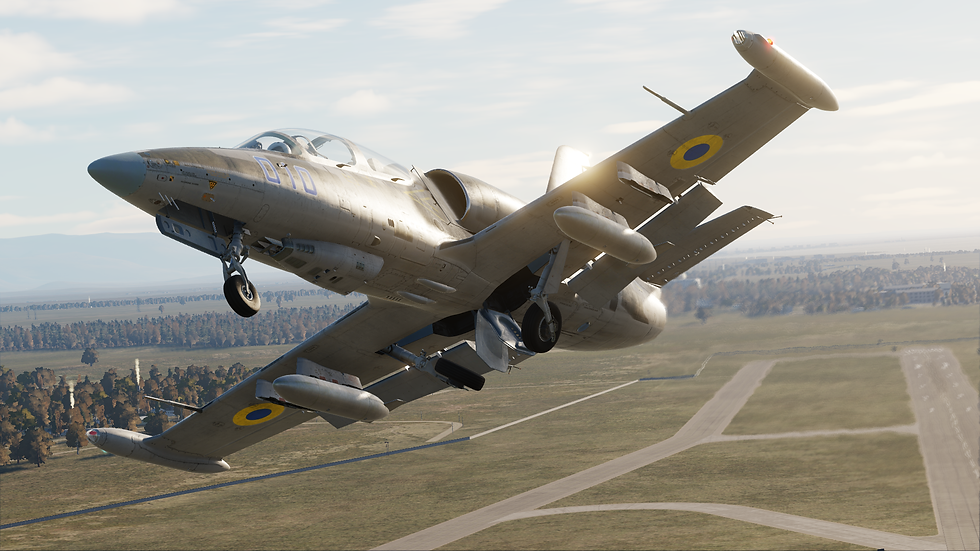
You can feel the change in lift when you drop your flaps, or the inertia the aircraft has after it has gained a substantial amount of speed. The Albatros is hard to stall, as I would expect from any trainer. It is just so easy to fly, it invites you to do cloud surfing while playing relaxing music in the background. It is an awesome plane to fly, and you should try flying it.
MISSION CAPABILITIES
As expected from a trainer, this aircraft does not have a large pool of missions to pull from. The L-39C variant, the basic trainer, can only carry very smaller/less practical munitions on its pylons, which limits it to serving as a pure trainer focused on VFR and IFR training, as well as basic weapon deployment exercises and flight trainer.
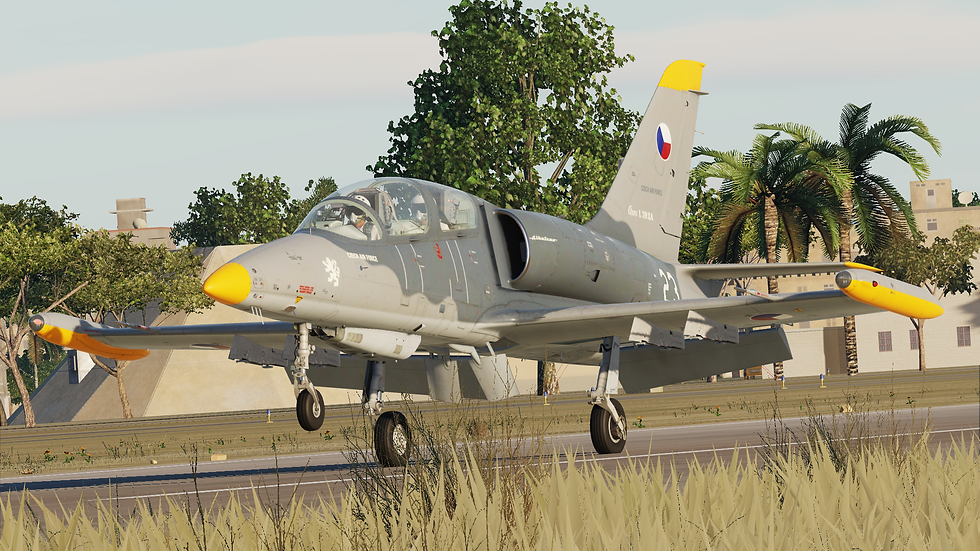
The L-39ZA is the light attack version of the Albatros. Equipped with an integrated 23mm cannon, it has a much more diverse set of weaponry, but despite being more varied than the Charlie version, it still is not a proper ground attack platform. It can defend itself on smaller ground attack missions and counter-insurgency (COIN) assignments, but you will not survive in a contested environment. For its size, it pulls a bit above its weight. It can actually defend itself under some circumstances, but you will need to work together with other platforms to get the mission done. Remember that during your missions, and you will survive.
ARMAMENT
GSh-23 23mm CANNON (L-39ZA)

This cannon, the same equipped on many Soviet aircraft of the era, is the main difference between the L-39C and the L-39ZA. With is small ammo pool of 180 rounds, you will need to make those shots count.
R-3S AND R-60M AIR TO AIR MISSILES
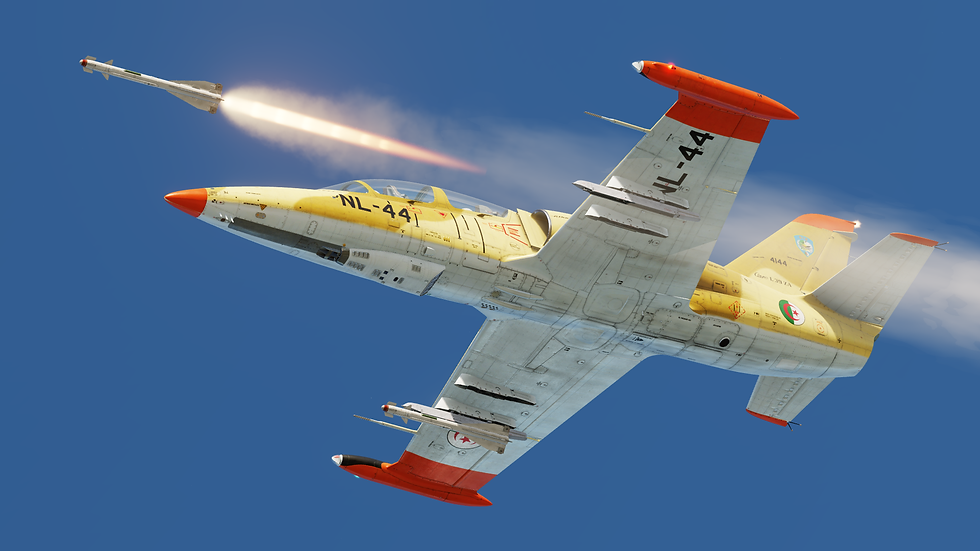
Surprisingly, the L-39 has access to two infrared air-to-air missiles. The R-3S is an older missile, not that capable, but the R-60M is very capable in the hands of a good pilot!
PK-3 GUN PODS (L-39ZA)

These gun pods are not that impressive when it comes down to penetration of armored units, especially due to its 7.62mm caliber; but it has extreme volume of fire since it has three barrels per pod. This brings the total to an astonishing 12 barrels if you equip all four pods.
UB-16M S-5KO UNGUIDED ROCKETS
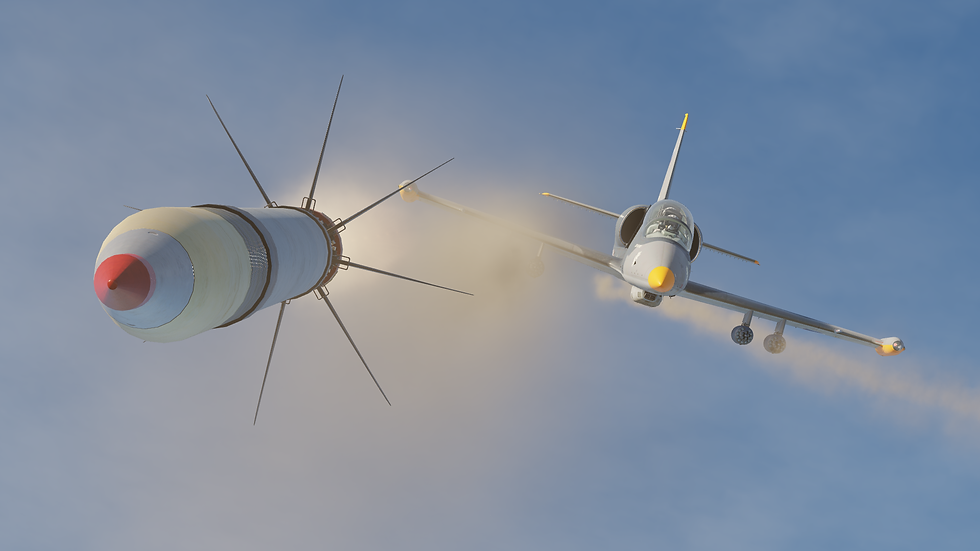
Your typical soviet unguided rockets, they pack a punch, and you have 32 of these per pod. With a maximum of four pods, you have plenty of high explosive to share around.
BOMBS
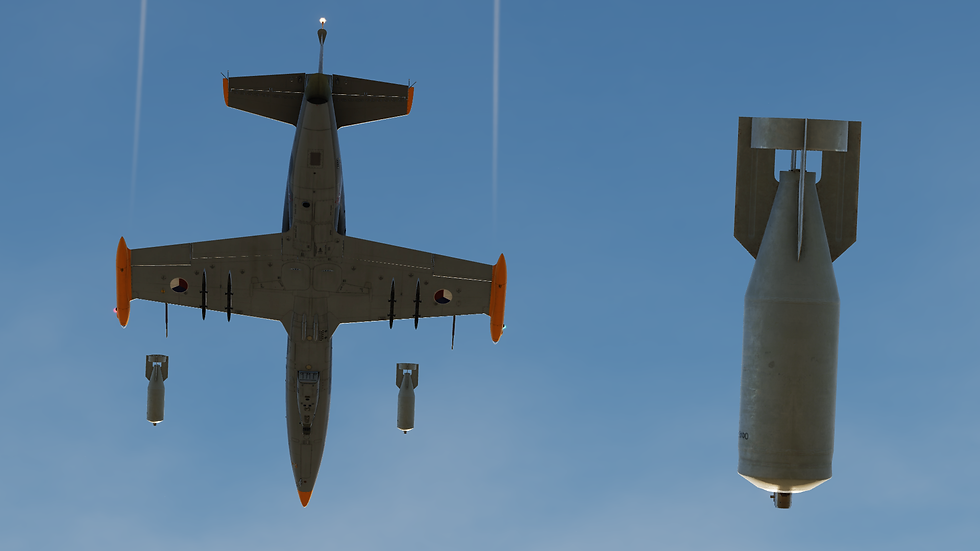
From the FAB-100, OFAB-100 and SAB-100, the Albatros has more bombs available for it than you would think. They are not big, but you can certainly do some damage with them.
EASE OF USE AND LEARNING CURVE
I'll keep this short and to the point: this aircraft's learning curve is as smooth as a baby's butt, with one exception: the taxiing. This aircraft uses differential braking for its steering in a soviet style system, which means that you do not have individual toe brakes. You will need to rely on applying brakes with your handle and then redirecting the force with your rudder pedals.
It is easy once you get used to it, or if you have already flown a Fishbed or other similar aircraft, then it will become second nature in no time. Aside from this, the Albatros is an excellent trainer that holds your hand no matter what you do to it in the air. It is great to fly, and it allows you to just express yourself in the skies but doing any maneuver you think of, exceptions apply.
ITS PLACE AS A TRAINER/LIGHT ATTACKER IN DCS WORLD
The Albatros is a very weird plane in DCS, as it is placed in a unique position. It is both a military and civilian aircraft, something that is reinforced by the developers with the addition of the NS430 GPS module to it. If you remove the gunsight and own the NS430, then you will be able to use it in the cockpit, civilian style.
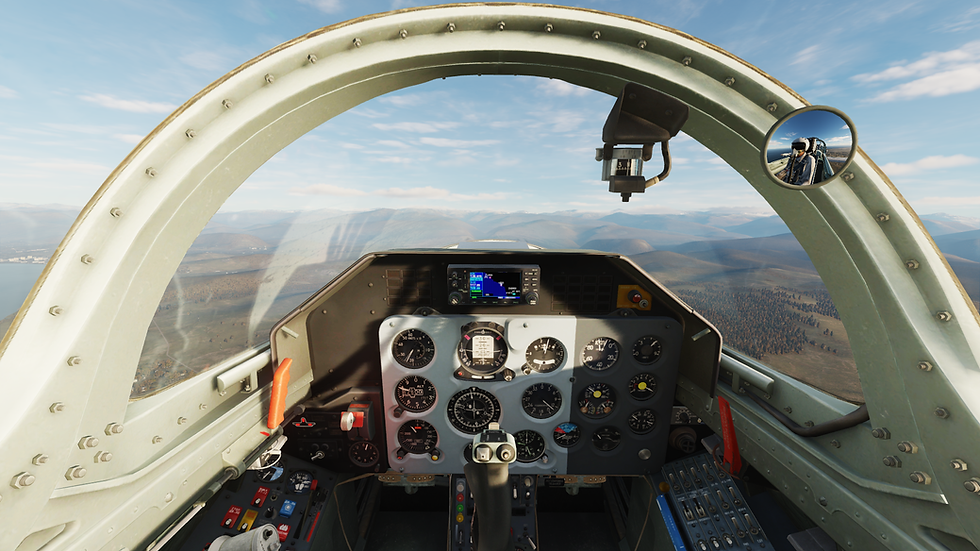
Reminiscent of the aircraft flown by the Black Diamonds or other civilian operators of the type, this system integrates GPS navigation to the Albatros, while at the same time giving you an excellent view without the intrusive presence of the gunsight. It is this mix between civilian and military that leads me to saying that the L-39 and the MB-339 stand very equal in the trainer war, since both aircraft also share this duality. The 339 has much better artwork, but both trainer are capable of combat and leisure.
IS THIS AIRCRAFT FOR YOU?
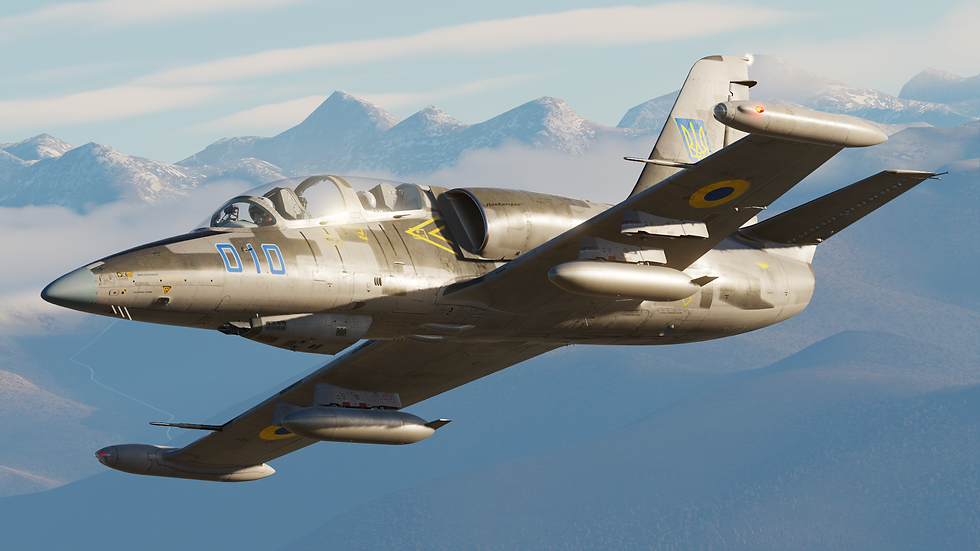
If what you want in a module is:
An incredible flying experience.
A more than decent light attacker.
A training platform that will allow you to grow as a pilot, regardless of experience.
An all weather platform that conquers the day and rules the night.
If you don't mind:
The older textures and artwork.
The limited combat capabilities in an open conflict.
The quirky nose wheel steering method.
The optional nature of the NS430 Nav suite.
If all or some of the above is what you want, then the L-39C/ZA Albatros by Eagle Dynamics is for you!
About the writer:
Santiago "Cubeboy" Cuberos

Longtime aviation fanatic with particular preference towards military aviation and its history. Said interests date back to the early 2000s, leading into his livelong dive into civil and combat flight simulators. He has been involved in a few communities, but only started being active around the mid 2010s. Joined as a Spanish to English translator in 2017, he has been active as the co-founder and writer ever since. Twitter | Discord: Cubeboy
















































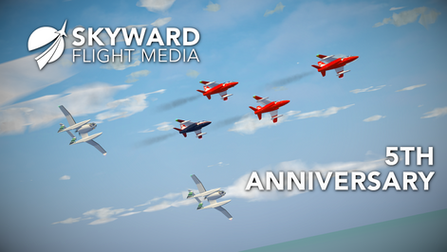











.png)